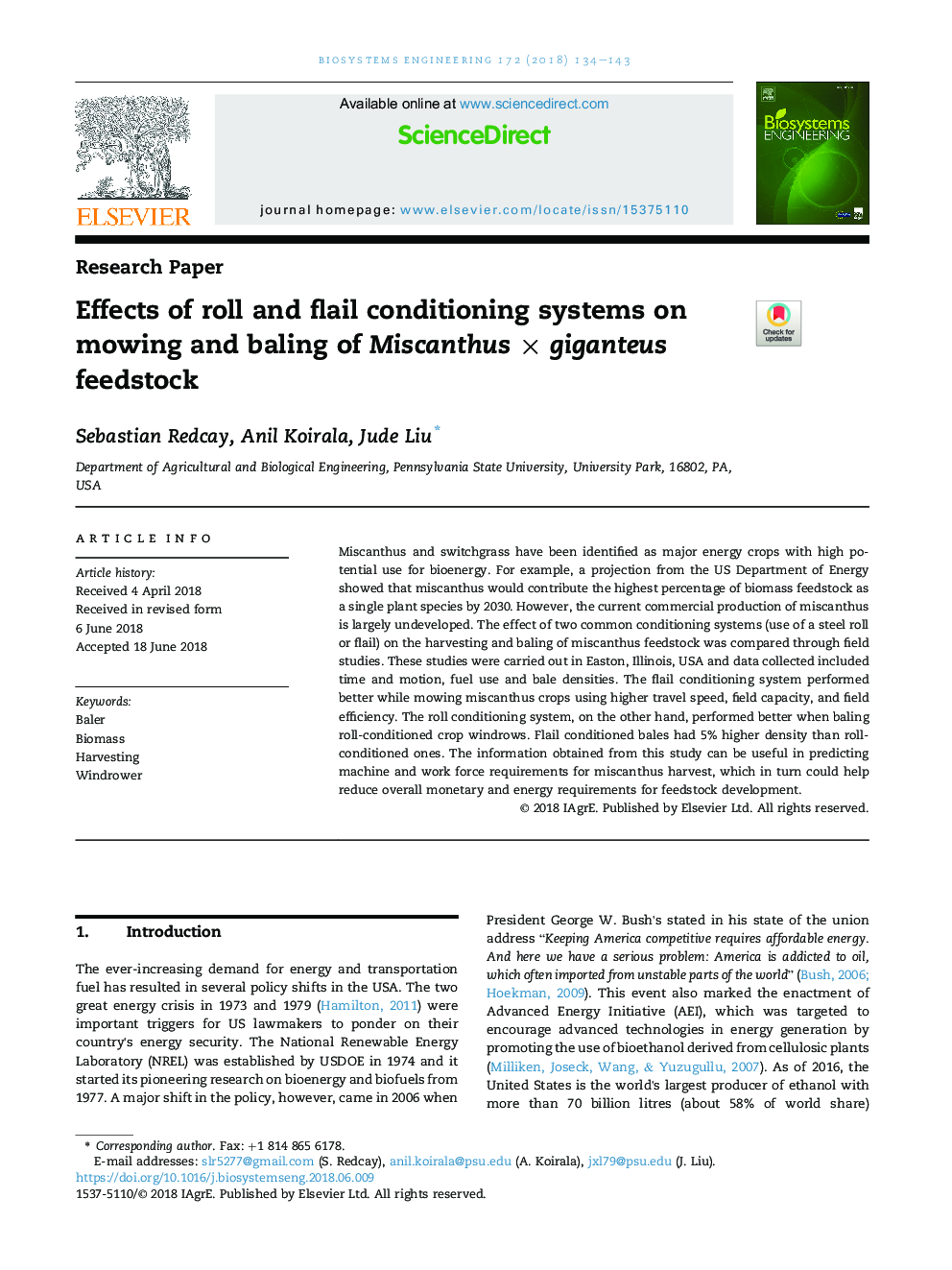| Article ID | Journal | Published Year | Pages | File Type |
|---|---|---|---|---|
| 8054639 | Biosystems Engineering | 2018 | 10 Pages |
Abstract
Miscanthus and switchgrass have been identified as major energy crops with high potential use for bioenergy. For example, a projection from the US Department of Energy showed that miscanthus would contribute the highest percentage of biomass feedstock as a single plant species by 2030. However, the current commercial production of miscanthus is largely undeveloped. The effect of two common conditioning systems (use of a steel roll or flail) on the harvesting and baling of miscanthus feedstock was compared through field studies. These studies were carried out in Easton, Illinois, USA and data collected included time and motion, fuel use and bale densities. The flail conditioning system performed better while mowing miscanthus crops using higher travel speed, field capacity, and field efficiency. The roll conditioning system, on the other hand, performed better when baling roll-conditioned crop windrows. Flail conditioned bales had 5% higher density than roll-conditioned ones. The information obtained from this study can be useful in predicting machine and work force requirements for miscanthus harvest, which in turn could help reduce overall monetary and energy requirements for feedstock development.
Keywords
Related Topics
Physical Sciences and Engineering
Engineering
Control and Systems Engineering
Authors
Sebastian Redcay, Anil Koirala, Jude Liu,
